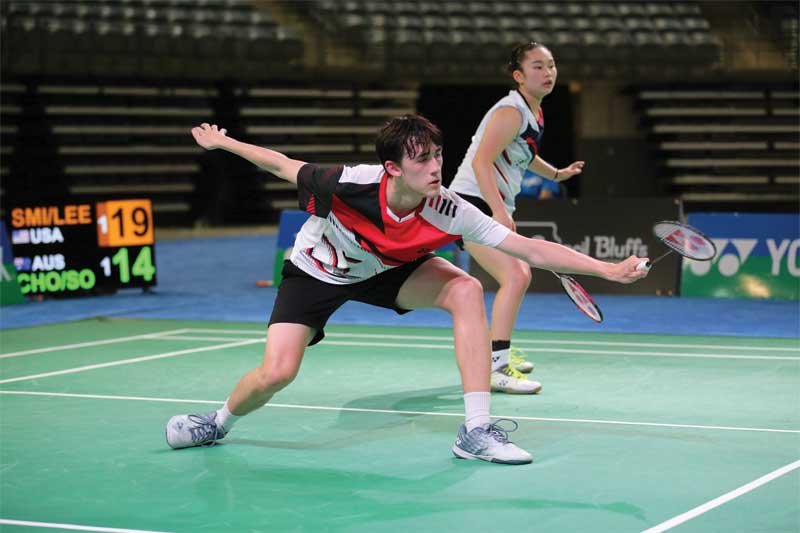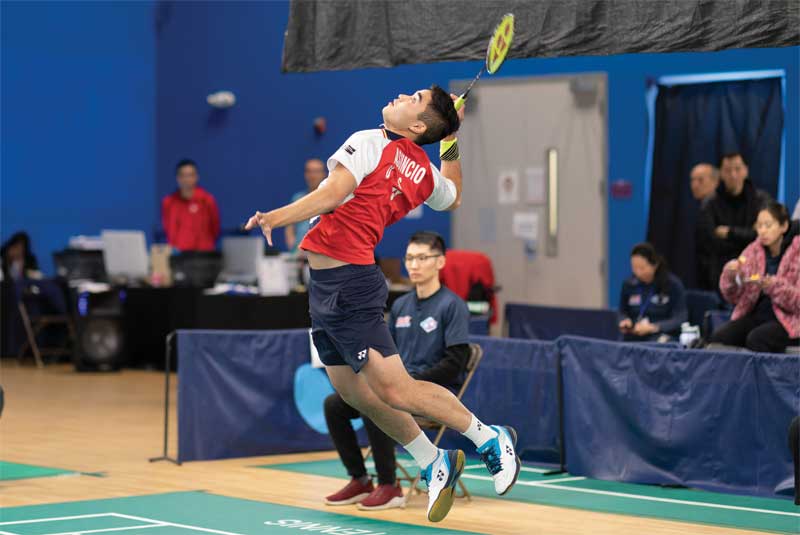
Badminton has long been a beloved sport worldwide. Its roots can be traced back to Asia, but the more modern version of the sport as we know it today originated in England. The sport supposedly got its name from Badminton, the country estate of the dukes of Beaufort in the southwest English county of Gloucestershire, where it was first played in 1873.
Nearly 100 years later, badminton became a sport at the Olympic Games. It was officially added as a full-medal sport at the 1992 Olympic Games, though mixed doubles weren’t introduced until four years later.
Despite its popularity around the globe, in the United States, badminton often plays second fiddle to its more popular counterparts, tennis and pickleball.
Facing challenges to popularity
A significant factor contributing to the disparity in popularity is the lack of widespread infrastructure and facilities dedicated to badminton. While tennis courts and pickleball courts are relatively common in parks and recreational centers in most cities across the country, dedicated badminton courts are fewer and farther between. This scarcity makes it challenging for enthusiasts to access the sport regularly and inhibits its growth.
On top of this, the perception of badminton as a casual backyard game rather than a competitive sport may deter serious athletes from pursuing it. Unlike tennis, which has a robust professional circuit, badminton struggles to garner the same level of recognition and prestige in the U.S. This lack of visibility at the professional level can impact the sport’s appeal to aspiring athletes.
To address these challenges and promote greater participation, USA Badminton, the national governing body of the sport, is taking proactive measures to promote the sport and support its growth. “Our role is to promote and grow the sport, developing the pipeline to allow the United States to be medal contenders on the Olympic and Paralympic levels,” explains Guillermo Rojas, Jr., interim chief operating officer of USA Badminton.
Currently, USA Badminton has approximately 3,000 members playing in nearly 200 clubs across the country. While major markets are where the organization has much of its presence—in cities such as Los Angeles, New York, Boston, and San Francisco—USA Badminton is striving to get the sport in front of more potential players, and it’s something officials believe can happen thanks to the upcoming 2024 Summer Olympics in Paris. “We’re excited because for Paris, we may have one of the largest Olympic teams that we’ve had in years,” Rojas says. “We’re hoping to have five athletes on the Olympic side and two on the Paralympic side. That may be slow growth, but it’s growth.”
Olympic future

In addition to putting the best players possible in Paris, USA Badminton is looking even further ahead: the 2028 Summer Olympics in Los Angeles. The organization feels that having the Olympics in the U.S. will help them take a significant step in growing the game. “The Games being in Los Angeles will bring so much attention to the sport,” adds Rojas. “We’re really excited about that. We are working now to put programs in place to get to L.A. and, in the best situation possible, take advantage of the Olympics being hosted there and having the chance to not only educate people on the sport, but let them know there are opportunities to get involved.”
The organization knows can be enjoyed by the masses. “Badminton is a sport for all,” Rojas says. “It’s not a sport that requires you to continuously run for hours. It’s a chess match too. It’s a combo of brain and body together, and it’s not one where the fastest or strongest will always win.”
Major events

While USA Badminton doesn’t currently have programs promoting the sport going on around the country—Rojas adds the organization wants to launch a program targeting youth to create more exposure for and interest closer to 2028—it is hosting two major annual events. Its biggest is the U.S. Open Badminton Championships from June 25–30, which will bring the top 350 players to the United States. To be held in Fort Worth, Texas, the event will be webcast for fans around the world to see the talent in action. “It’s the cream of the crop, and it’s a great preview for Paris 2024,” says Rojas.
The organization’s other big annual event is the Junior National Championships. The competition will bring approximately 700 players to Irvine, Texas, for a seven-day event (July 2–8) that showcases upcoming talent within the sport.
Both events move around the country each year, having been hosted everywhere from Los Angeles to Seattle, Wash., to Omaha, Neb., and the organization is always looking for a new partner who wants to help promote the sport. “We want to be in a market where perhaps we can come in a little early and provide some programming, and we want to be in cities with partners that want to take advantage of that,” explains Rojas. “It’s beneficial to extend the event window, and that’s why we’re looking at things beyond facilities. We’re looking for creativity to take the sport outside of just the competition.”
That creativity could mean hosting a match in a not-so-typical destination, such as a mall or park, to give the public a better idea of the sport. That is made much easier to do with a sport like badminton as it doesn’t have a large footprint, Rojas adds. “We can fit four competition courts and have them all going on at the same time in an area a little larger than a traditional basketball court,” he says. “Badminton is a sport that’s very flexible in terms of its footprint, so it’s very manageable in terms of the type of venues we can use. Because of that, we hope to be showcasing the sport and our stars more between now and LA 2028.”









